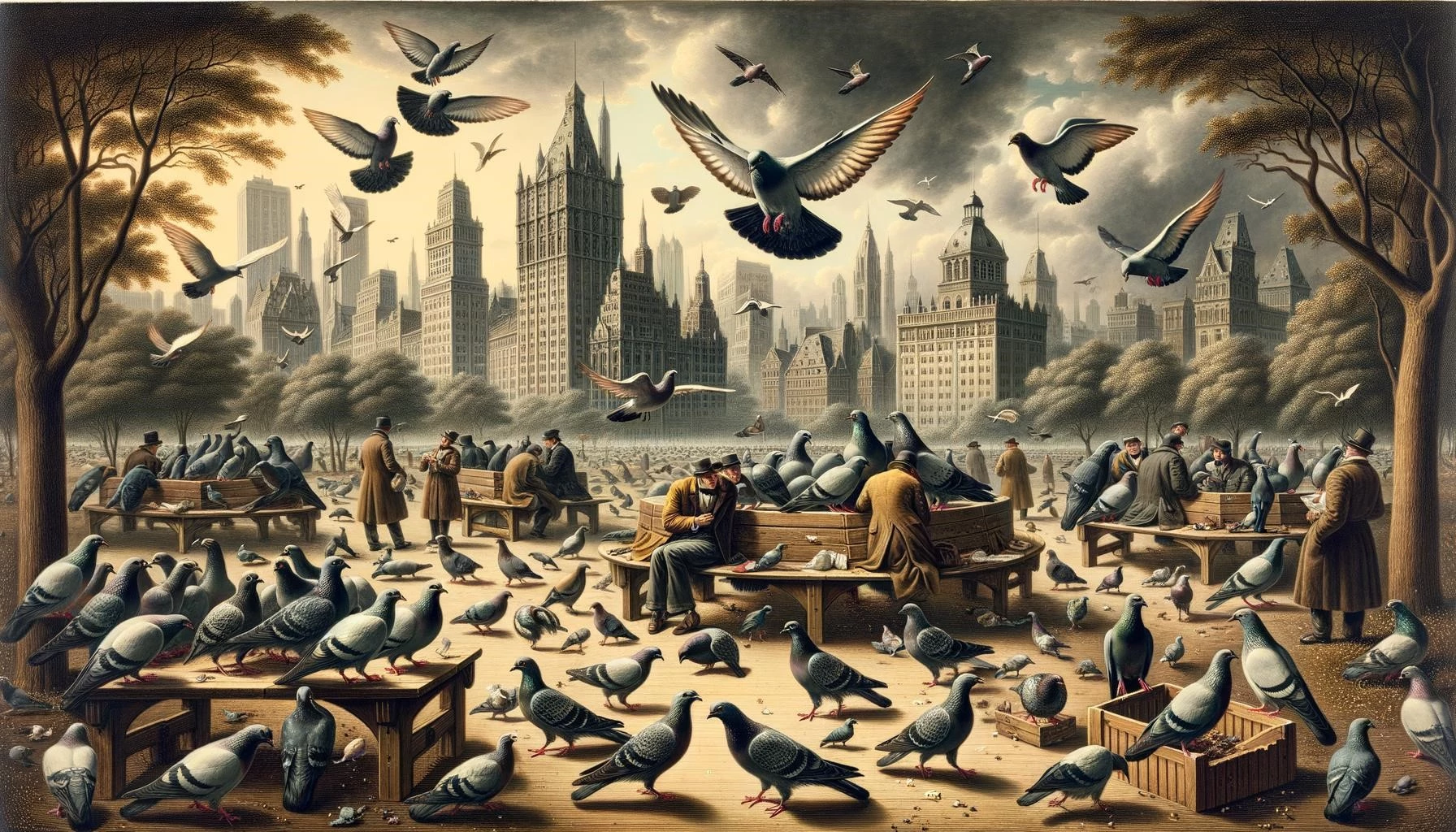Pigeons, commonly found in urban environments, are fascinating creatures with their own unique set of behaviors and adaptability. Understanding pigeon behavior and their environment can provide valuable insights into their social dynamics and help promote coexistence between humans and pigeons. In this article, we will explore key aspects of pigeon behavior and their interactions with their surroundings.
Key Takeaways
- Pigeons exhibit a variety of behaviors, including body language, aggression, and territoriality.
- They have adapted to urban environments, developing behaviors that help them survive in cities.
- Pigeons exhibit social hierarchies, communicate with each other, and navigate their environment as a flock.
Pigeon Behavior
Pigeons have their own unique behaviors that are fascinating to observe. One aspect of pigeon behavior that intrigues observers is their body language, particularly when it comes to displaying aggression. Pigeons use body signals such as puffing up their feathers and engaging in physical fights to establish dominance and defend their territory.
Pigeons are also highly social birds, often seen in large flocks. Within these flocks, a well-structured hierarchy is established through pecking order. However, horizontal relationships between members can also be observed. Pigeons exhibit communal roosting and nesting behaviors, often sharing spaces such as rooftops, trees, and ledges.
Territoriality is another common behavior observed in pigeons, especially among males. They establish territory, known as perch rights, by marking specific branches or roosting spots. This territorial behavior helps pigeons secure nesting and roosting sites.
Pigeons in Urban Environments
Pigeons have adapted remarkably well to urban environments, where they thrive due to the abundance of food sources and suitable nesting sites. They have developed behavioral adaptations that help them survive in cities, such as scavenging for food on the ground and utilizing buildings and structures as nesting sites.
In urban areas, pigeons have learned to coexist with humans, often feeding on discarded food and finding shelter in man-made structures. They have become well-adapted to the presence of people and can navigate crowded streets and buildings with ease.
Pigeons are also known for their ability to communicate and navigate as a flock. They exhibit highly coordinated flight patterns, following the lead of a few individuals who detect potential threats and change their course accordingly. This collective behavior helps pigeons avoid predators and find resources in their urban environment.
Pigeon Social Dynamics and Communication
Pigeons have complex social hierarchies within their flocks, and understanding these dynamics can provide valuable insights into their behavior and interactions. Dominance within a flock is established through pecking order, and individuals lower in the hierarchy defer to those higher in rank.
In addition to pecking order, pigeons also communicate with each other through vocalizations and visual displays. Cooing is an essential part of their communication repertoire, used for various purposes such as courtship, territorial defense, and flock cohesion.
Through vocalizations and body language, pigeons convey messages to each other about their intentions, warnings, and dominance. They also use visual displays, such as puffing up their feathers, head-bobbing, and posturing, to communicate and establish their social standing within the flock.
Pigeons are intelligent and adaptable creatures that have successfully adapted to urban environments. Understanding their behavior and environment is crucial for promoting coexistence with humans and creating a harmonious living space for both pigeons and people.









